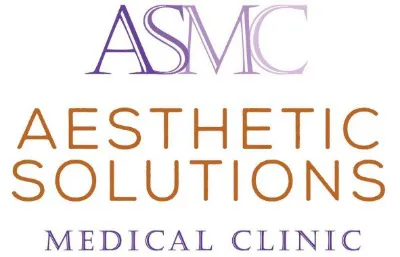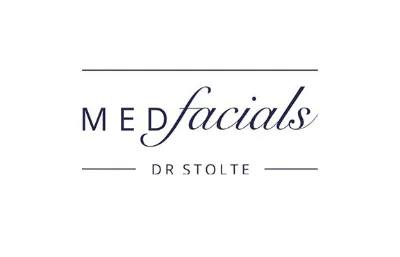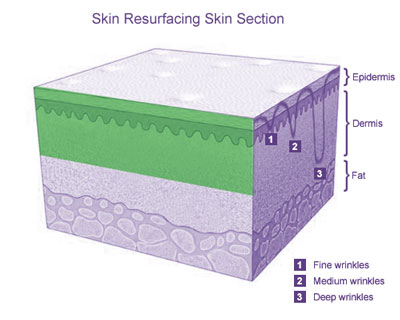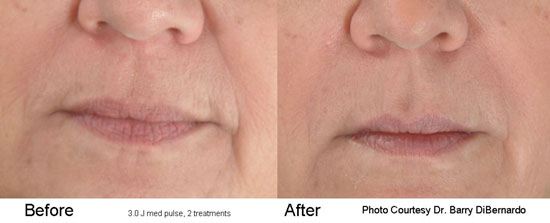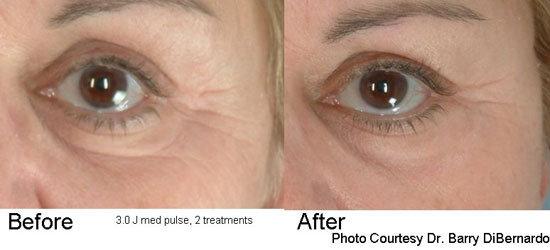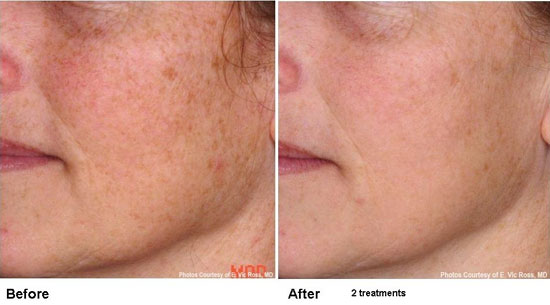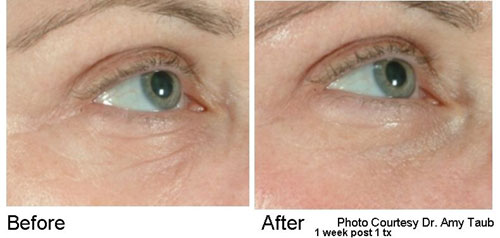Depending on the area of skin to be treated and the type of laser system used, different treatment procedures may be recommended for you by your practitioner.
Your first discussion with a practitioner should clearly set out your expectations of the laser treatment and whether your medical practitioner believes that he or she can achieve this for you.
A medical history should be taken at this time to make sure that there are no reasons why you shouldn’t have the treatment. You would normally be asked to read detailed information and sign a consent form which means that you have understood the potential benefits and risks associated with the procedure recommended for you.
Photographs may also be taken by the practitioner for a "before and after" comparison at a later date.
Treatment procedure for ablative laser skin resurfacing
Two main types of laser are used for skin resurfacing - the Carbon Dioxide or CO2 laser and Erbium Yag lasers. Both of these lasers operate in a wavelength (or colour of light) that is attracted to water molecules contained in the skin.
Recommendations a week before the treatment may include stopping taking any aspirin or nonsteriodal anti-inflammatory drugs (NSAIDS) to reduce bleeding following treatment (especially if an Erbium Yag laser is used).
Some practitioners like to test a patch of skin before the full treatment to familiarise the patient with the technique and educate them about the healing process. The skin test will also check for any tendency for pigment change or scarring in your skin.
Many practitioners will recommend some form of pre-treatment to the skin 2 weeks before the procedure; these can include retinoic acid, or alpha-hydroxy acid based creams, which help to condition the skin and improve healing after the operation.
The full procedure usually involves the use of local anaesthetic on the area to be treated, and for larger treatment areas this may be combined with some form of sedation to make you drowsy during the procedure and to lessen any discomfort.
Before laser resurfacing, the skin surface is treated with an antiseptic and gently cleansed. Surrounding hair is protected with wet gauze, and eye shields should be worn.
If the eye area itself is to be treated, then intraocular stainless-steel eye shields are usually recommended to ensure that your eyes are fully protected from the laser.
If you are not sedated, be prepared for a loud cracking noise when the laser is being operated as the beams are emitted onto the surface of the skin. Do not be alarmed: this is quite normal!
Depending upon the type of laser used this procedure can take from 15 - 30 minutes, for smaller areas of treatment, to over an hour for full face resurfacing.
Repeat procedures
Depending upon the depth of treatment, and recovery time, those wrinkles or scars that haven’t been improved satisfactorily, can be treated a second time. This can take place 6 to 12 months after the first treatment.

